Calf Muscles and Injuries
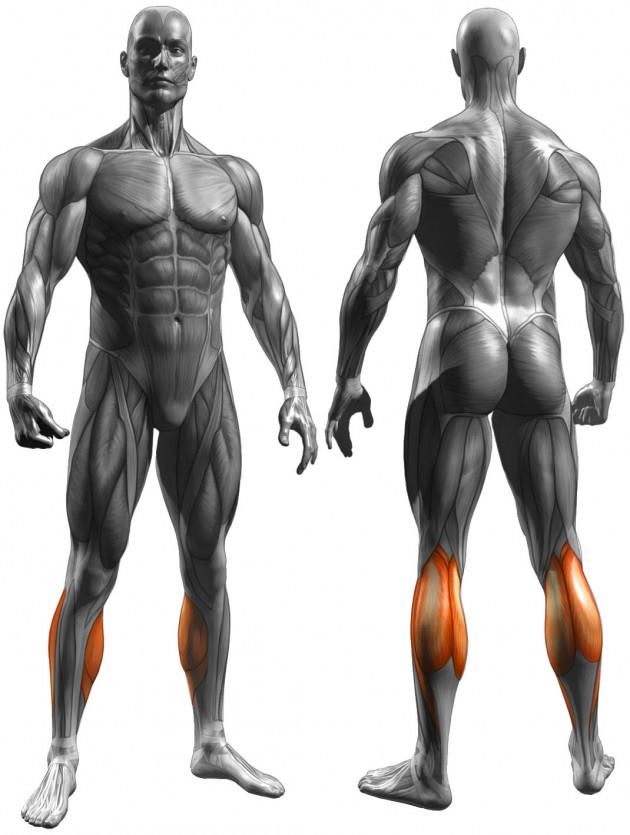
The main bulk of the calf is comprised of 2 muscles. The gastrocnemius is the main superficial muscle which tends to be well-defined, and is responsible not only for plantar flexion of the ankle, but also flexion of the knee. This is why in a sports massage assessment I may observe a squat to assess the calf muscles. It is used when performing power exercises and accelerating.The soleus, lies deeper and also plantar flexes the ankle, but has slow twitch(type I) fibres which are more resistant to fatigue, so are used in endurance sports such as running.
Everyone has a different genetic predisposition to Type I and Type II muscle fibres, and growth potential will be higher in someone who is more Type II dominant because they will be better equipped to do strength training. Type I dominance however has a higher potential for endurance such as marathon running. Type I dominant people can still do strength training, but they may have to work harder to achieve the same muscle growth as someone with type II dominance.
The smaller calf muscles can easily be missed from a workout, but strong calves help to balance out your body, and they’re important for forward propulsion in explosive power movements both inside and outside the gym, eg.sprinting and cycling. The calf muscles also help to stabilise the foot when landing, and injuries such as plantar fasciitis and Achilles tendonitis may result from tight calf muscles which limit the ankle mobility.
The most common gym exercises that use these calf muscles are:-
• Cardio - cycling, rowing, stepper, running
• Resistance – squats, lunges, deadlifts,leg press, leg curl,calf raises • Power – jumping
• Balance – any single leg balance exercises
The gastrocnemius and soleus muscles merge at the base of the calf muscle, into the Achilles tendon which inserts into the heel bone. The calf muscles pull the heel up to allow forward movement.
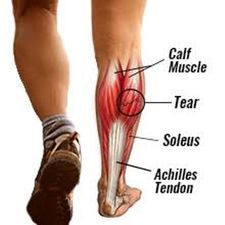
Common injuries include:-
GRADE 1 CALF MUSCLE STRAIN: the calf muscle is stretched past its normal length and limitations, resulting in some muscle fibres being torn. This type strain may not be noticed until after the activity.
GRADE 2 CALF MUSCLE TEAR: More serious strains result in partial tear of the calf muscle, involving more muscle fibres. Localised calf pain is noted during activity and will be sore to touch.
GRADE 3 CALF MUSCLE RUPTURE: completely torn muscle, resulting in severe pain, bruising and inability to walk, where the muscle may collapse into a lump which is seen and felt through the skin.
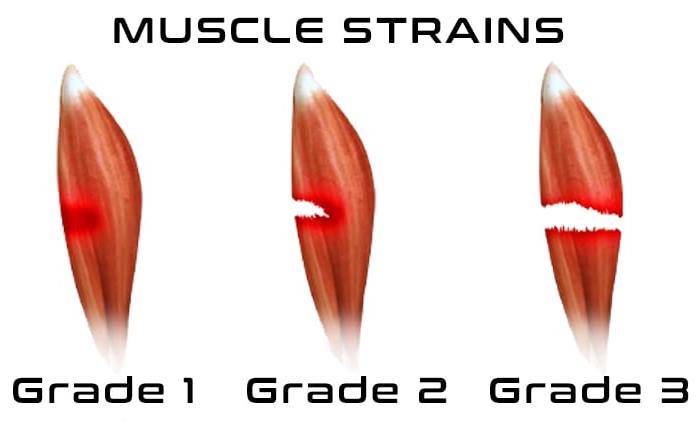
CAUSES of calf strain:-
• sudden, abrupt movement
• over use
• insufficient warm up/ cool down
• sudden change of direction, explosive movement or increase in speed
• climbing/ running up hills
• over pronation
• inappropriate footwear.
SYMPTOMS of calf strain:-
• sudden sharp pain in the lower leg
• pain/ache in the mid calf
• pain on resisted plantar flexion/ standing on pointed toes
• burning/stabbing sensation
• inflammation of the lower leg
• a palpable lump
• bruising to the lower leg
• difficulty weight bearing
• tightness
• inability to contract the muscle, with complete rupture
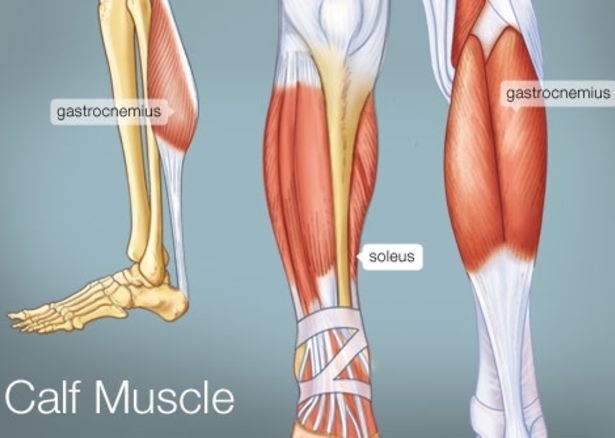
TREATMENT OF CALF INJURIES
Early treatment means a better outcome and prevents a higher grade strain.
• grade 1 strain recovery = approximately 2 weeks
• grade 2 strain recovery = up to 5-8 weeks
• grade 3 strain recovery = up to 3-4 months.
Treatment includes:-
• Rest to prevent further damage. Power exercises that put excessive strain on the gastrocnemius or soleus may have to be avoided for 3 days to 3 weeks in acute stage and 3 weeks to 2 years in the chronic stage
• Physiotherapy/ sports massage
• Ice can be applied for 10-15 minutes, every 2-3 hours in the acute stage
• heat therapy can be applied in the sub acute stage
• Compression to reduce swelling and restrict movement. Casts may be used to stabilise a grade 3 rupture.
• Elevation to improve lymphatic drainage and aid venous return
• NSAIDS (anti-inflammatories) and paracetamol for pain relief
• Orthotics can prevent overpronation
• Kinesiology taping may assist with lymphatic drainage and the repair of damaged tissues.
• In severe grade 3 ruptures surgery may be required Massage can aid recovery, and improve joint mobility but should not be used in the acute stage.
As a sports therapist I can recommend strengthening exercises following the acute stage which will gradually increase in intensity.
SUITABLE EXERCISES WITH A STRAINED CALF
When a calf muscle is strained, you need to take a specific exercise approach that accommodates pain levels and doesn’t worsen the injury. Safe exercises involve anything that doesn’t require plantar flexion of the foot, ie. heels up and pointed toes.
Limping due to the injury can cause problems in other areas such as the lower back, or in the uninjured leg due to over compensation, so sports massage in these areas during the healing period could help.
WEIGHT TRAINING :-
• bench presses
• shoulder presses, can be done seated if painful to stand
• back rows
• triceps extensions
• biceps curls, can be done seated if painful to stand
• crunches
While squats, leg presses and leg extensions work the thighs and glutes, they also use the calf muscles to stabilise, which might be painful, so it is advisable to wait until pain levels are better.
CARDIOVASCULAR:-
Most cardiovascular exercise involves plantar flexion, eg.running, walking, biking, stair climbing, jumping rope and even swimming. Rowing and cross trainers allow your feet to be planted firmly on supports and place less pressure on the calves.
CORRECTIVE EXERCISES & PREVENTIVE MEASURES
When pain is minimal, following a rest period, it is important to gradually strengthen the muscle and increase range of motion to lower the risk of future strains. These stretches should only be performed to the point of discomfort and if painful should be stopped.
The following stretches will help strengthen and stabilise the calf :-
• downward dog
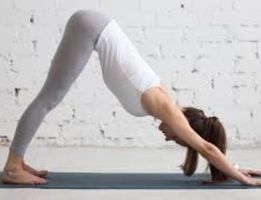
• Single Leg Squat
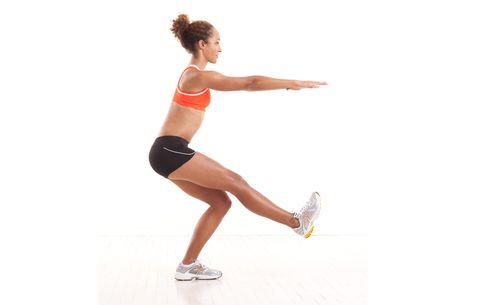
• Heel Raise/drop on step
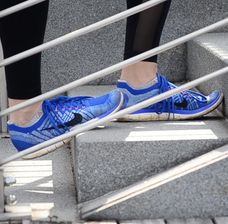
• Heel scoops
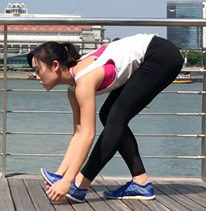
• Standing rear leg calf stretch against a wall
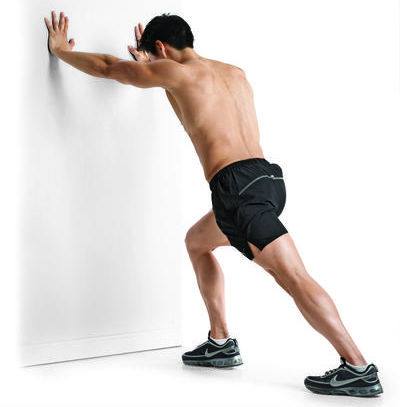
• Seated calf stretch
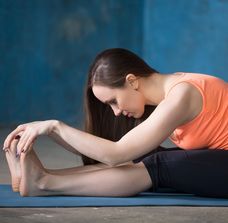
• Wobble Cushion Balance (single leg)
CALF INJURIES WHEN RUNNING
PREVENTIVE MEASURES:-
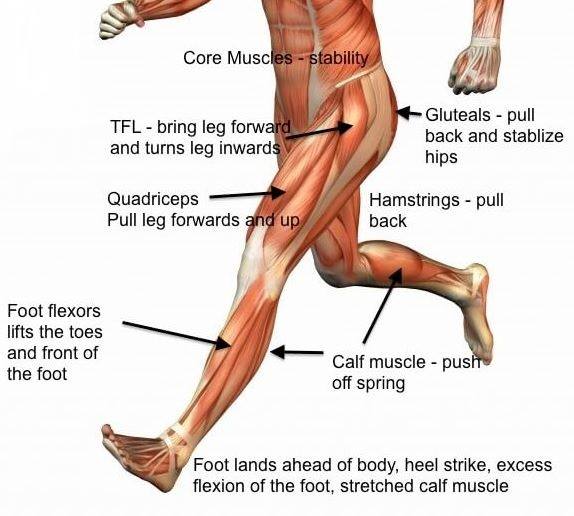
Not warming up before running or doing workouts that involve your calf muscles increases the risk of injury. Dynamic stretches such as ankle bounces can be used before the workout followed by static stretches after.(see previous post on stretches) Static stretches help to lengthen the muscle while warm. The calf not only helps to propel us forward into the next stride when running, but also stabilises the ankle and acts as a shock absorber of our body weight landing. If every mile takes for example, 1500 strides, any calf weakness or incorrect running technique will increase stress on those muscles and therefore increase risk of injury. Calf overload may occur if the glutes are tight as impact that would normally be taken through the hip will be transmitted further down the legs. Good hip extension is required for swinging the leg into forward motion so if a runner is prone to painful or injured calves, it may be worth having a sports massage around the hip flexors and glutes.
FOREFOOT RUNNING :- Calf injuries may also occur when adapting to forefoot running too quickly. The calf extends from attachments above the knee to the achilles tendon which attaches at the base of the heel. If not warmed up the calf muscle will take more impact and over compensate for the elasticity of the Achilles tendon, which also reduces with age.
